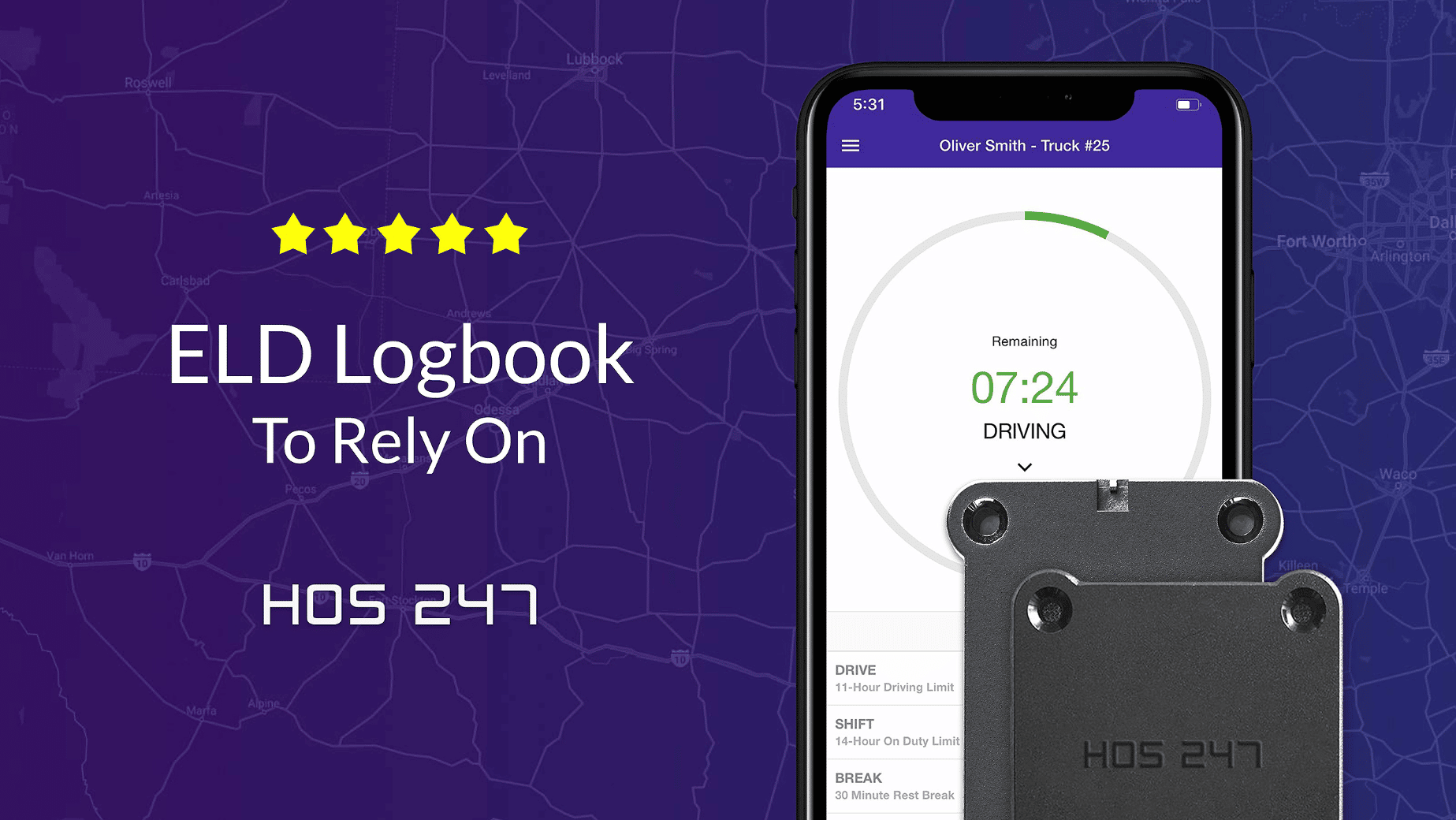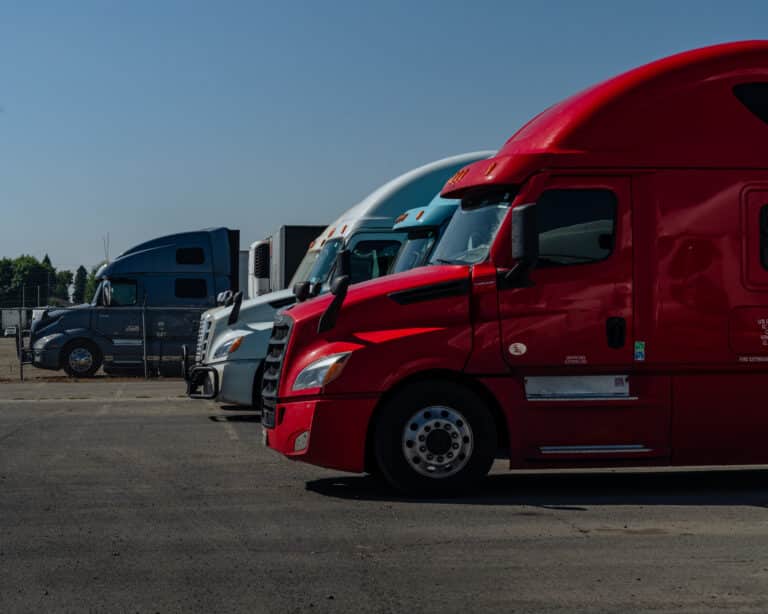The final rule that outlines the new Canadian HOS regulations was released by Transport Canada on June 13, 2019. These elog rules were modeled after the U.S. ELD mandate, which has been in place since Dec. 16, 2019. The Canadian mandate went into effect on June 12, 2021 and full enforcement was programmed to begin on June 12, 2022. However, the progressive enforcement period was extended to January 1, 2023. It is by that date that commercial motor vehicle operators will need to log their hours of service using electronic logging devices instead of paper logs.
The main reasons for the U.S. Federal Motor Carrier Safety Administration’s ELD mandate were to make it easier for carriers to manage and track their records of duty status and to keep the roads safer. Since the U.S. elog regulations have been in place, thousands of crashes have been avoided and countless dollars worth of paperwork expenses were saved. Total benefits realized overall have reached close to $400 million.
Additionally, the Canadian ELD regulations are expected to:
- Standardize processes that will help drivers avoid errors, and prevent driver harassment and logbook tampering.
- Require drivers to use regulation-compliant ELD devices that connect directly to the engine’s engine control unit or engine control model.
- Require electronic logging devices to be certified by a third-party—unlike the U.S. mandate.
- Will not have a grandfather clause extending the compliance deadline for drivers using existing devices.
Canada ELD Mandate Compliance Timeline
After a consultation period involving ELD vendors, transportation industry stakeholders, and provincial governments, the federal government of Canada decided to follow in the footsteps of the United States by enforcing its own mandate. The timeline is as follows.
December 16, 2017
The Canadian government published the Regulations Amending the Commercial Vehicle Drivers Hours of Service Regulations.
June 13, 2019
Transport Canada made the announcement that it will be requiring the use of ELDs for buses and CMVs.
June 12, 2021
The mandate goes into effect and the progressive enforcement period begins, during which consists of education and awareness.
March 7, 2022
The CCMTA announces an extension to the progressive enforcement period.
January 1, 2023
Deadline to comply with the mandate: CMV and bus drivers must use certified electronic logbooks by this date.

Are the Canadian Elog Rules and Regulations Different from the U.S. ELD Mandate?
Despite the fact that the Canadian government modeled its elog rules and regulations after those of the United States, there are differences that CMV drivers and bus drivers must become familiar with if they operate in both countries. The main differences are in the areas outlined below.
Off-Duty Time
One main difference between the Canadian ELD rules and the U.S. rules is the way off-duty time is handled. Overall, the U.S. ELD rules are more strict. In the United States, it is mandatory that drivers take an off-duty rest break for 30 minutes after an eight-hour shift. In contrast, Canadian drivers have more flexibility; they can drive up to 14 hours before taking a break. That’s because the Canadian HOS regulations state that drivers are allowed a window of 16 hours to complete a driving shift and need to devote two of those hours to off-duty time. Those two hours can be taken at once or they can be broken up into single-hour or half-hour periods.
In addition, Canadian drivers can choose to defer any of their unused off-duty time to the next day. The United States strictly prohibits this and, instead, requires drivers to take a 30-minute off-duty break after driving for eight consecutive hours.
Canadian drivers should already be familiar with these HOS rules, but they are worth mentioning since they will not be changed to more closely align with the U.S. ELD rules.

Roadside Data Transfer
Another difference between the U.S. mandate and the Canadian ELD mandate is how data is transferred. In the United States, there is an eRODS (electronic records of duty status) data repository that collects elog data. The ELD must be able to transfer data to safety officials on-demand via email or wireless web services. Alternatively, it could use either USB or Bluetooth technology for local transfer. Despite the data being transferred to the repository, it also needs to be either displayed on the ELD or printed on paper when a Department of Transportation officer requests the information during an inspection.
In Canada, drivers transfer their HOS data directly to the inspection officer, thus eliminating the need for an agency to oversee a large database. The data will be transferred using Transport Canada servers and be made immediately available to the officer. USB and Bluetooth are also options, but it is not mandatory for Canadian ELDs to provide them, unlike in the United States.
Accounting for Personal Conveyance Hours
Personal conveyance hours are also accounted for differently with the Canadian ELD mandate. This is the time that a driver can claim when driving a CMV for purposes unrelated to their job. An example of personal conveyance is when a driver uses the vehicle to drive from a lodging location to a restaurant for a meal when they’re off-duty. In the United States, there is no limit to the distance the driver can travel or the time it takes to get there. In contrast, Canada limits drivers to a 75-kilometer (50-mile) radius.
This is another rule that Canadian CMV drivers should already be familiar with and will not be changed to match the U.S. regulations. Canadian ELDs will strictly reinforce this rule, and they will force drivers into driving status after the driver reaches their personal conveyance limit.
Certification Process
One drawback to the U.S. ELD regulations is that electronic logbook vendors are allowed to register themselves. This creates headaches for carriers, since some providers claim to be compliant and turn out not to be. It isn’t until complaints are made to the FMCSA against the vendor that they are taken off the approved vendors list.
In contrast to the United States, Canada will require a third party to test and certify all ELDs before they are sold. This should make it easier for Canadian fleets to find a compliant elog solution. (In the United States, there are over 700 self-registered devices on the list, making it difficult to choose the right one.)
Malfunction Procedures
The procedures for what to do if an ELD malfunctions are also different in Canada. If their ELD malfunctions, a Canadian driver will be permitted to use paper logs for no more than 14 days, or until they return to their home terminal if the trip lasts longer than 14 days. In the United States, the maximum amount of time is eight days. After this period, in both countries, the ELD must be made fully functional before the driver begins another shift.
Grandfather Clause
In the United States, there was a grandfather clause stating that drivers who were already using electronic recording devices (ERDs) had two extra years to upgrade their devices and comply with the ELD mandate. Canada will not be imposing a grandfathered period since it is expected that upgrades can be done quickly enough to comply with the mandate’s deadline.
HOS Rules
Canadian ELDs must be able to support specific HOS rules and exceptions, including:
- Deferral of off-duty time from day 1 to day 2.
- Adverse driving conditions.
- A maximum driving distance of 75 kilometers for personal conveyance.
- Ability to split sleeper berth time.
- Modified rules for driving north of the 60th parallel.
What Is an ELD?
ELD stands for electronic logging device. Essentially, it is a device that collects data from the vehicle’s ECM (or ECU) about the driver’s hours of service. The data collected is used to process drivers’ RODS and HOS in order to ensure the driver and vehicle are compliant with ELD rules and regulations.
The official definition of an ELD, according Transport Canada is: a certified device or technology that automatically logs the driver’s driving time and record of duty status.

Who Is Affected by the Canadian ELD Mandate?
Once officially implemented on January 1, 2023, the Canadian ELD mandate will affect federally regulated carriers, but not carriers that fall under provincial jurisdiction. It is expected that approximately 157,500 CMV drivers will fall under federal jurisdiction by that time and will be required to comply with the ELD rules and regulations. This includes carriers that provide extra-provincial transportation, unless they meet the Canadian electronic log exemptions.
Canadian Elogs Exemptions
Since Canadian HOS regulations will not change much at all, there will not be as many exemptions as there are in the United States. However, an ELD will not be required for the following:
- CMVs that operate under a specific permit from an HOS director.
- CMVs that have a statutory exemption.
- CMVs that fall under a short-term rental agreement (under 30 days).
- CMVs manufactured before the year 2000.
It is important for Canadian fleets to determine whether they fall under any of the aforementioned exemptions, or they risk fines and penalties for noncompliance.

I’ve co-founded, built and managed several transportation-related businesses. Now, I’m a founder and CEO of HOS247 – an AI Transportation Platform for trucking companies, freight brokers and other logistics operations. We are transitioning old-style operations to technology-advanced logistics entities and help them to grow their businesses. ELDs (electronic logging devices), fleet tracking and management 2.0 combined with AI-powered dispatch tools.












Since the implementation of the ELD law in Canada, electronic logging devices have replaced traditional paper logbooks, automating the recording of driving time and hours of service. Failing to comply with this regulation can result in hefty fines, penalties, and

The trucking industry, an integral part of the global economy, has long been perceived as a sector slow to embrace technological advancements. This conservative approach, however, has undergone a significant transformation, especially with the enforcement of the ELD mandate. This

If you’re a fleet manager or a business owner with a fleet of commercial vehicles, you understand the challenges that come with it—rising fuel costs, maintenance expenses, compliance requirements, and the need to meet customer expectations promptly. That’s where GPS